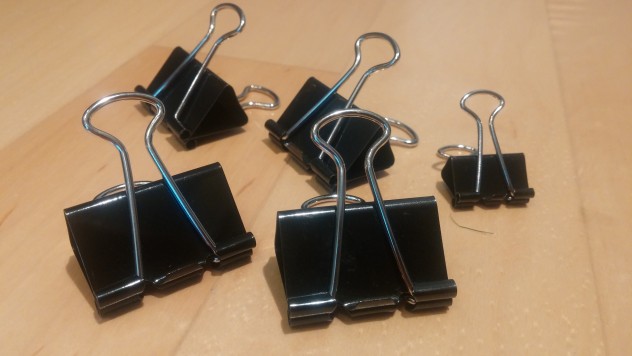Welcome back! This post–the 4th in the Tips for Imaginative Educators Series–is a bit different.
Be warned: it contains good news, bad news, better news, and a challenge.
The metaphor is a super-charged tool of the imagination; it has novelty built right into it. Metaphors matter for teaching because they spark our ability to envision the possible—they represent divergent or lateral kinds of thinking. They help us to learn by engaging our emotions, enriching meaning, and revealing nuanced ideas.
Now for some good news, bad news, and better news. The challenge comes last.
Good news
All human beings use this cognitive tool—that means you, your children, all your students. (Just read Lakoff & Johnson’s book The Metaphors We Live By to see how infused our language is with metaphor.) Indeed, we so commonly use metaphor that we are hardly aware of it. Quick activity to prove this point: There are at least 5 examples of metaphor in what you have read so far. Can you spot them? (I won’t spoil this by including the answer here–scroll down to the end for those—no cheating!)**
More good news: The capacity to understand and employ metaphor does not need to be formally taught; we develop the ability to use and understand metaphor as we learn to speak an oral language.
Hang out with kids who are learning to talk and you’ll know what I mean. Once, my increasingly verbal 2-year old said this to me when we were driving in the car and she was securely fastened in the seat directly behind me: “Mamma, we are a pencil!”—I didn’t teach my daughter to employ metaphor or to take the qualities of a pencil to describe our alignment. But she was right. We were a pencil. She was employing this convention of language as she was becoming an oral language user.
Of course, a young child will not know the literary definition of “metaphor,” “simile,” “analogy”, or how these differ, but that’s not important here. What is important is that young kids are exceptionally good at making sense of the world in lateral or divergent ways. They constantly understand one thing by applying the qualities of another thing—it is a source of their fantasy and play but also a lingering quality and learning tool for people of all ages.
Bad news
A study done by Gardner & Winner* revealed that our metaphoric capacity peaks at about age 5; it declines rather rapidly after that. Sir Ken Robinson makes the same point in an illustrated presentation called “Changing Education Paradigms”. The bit of his talk that I am referring to here is the part where he provides a “cod” example showing how schooling can impact divergent thinking (yes, there is a picture of a fish at this point in the presentation). Synopsis: Sir Ken Robinson says we have to be careful that schooling doesn’t kill divergent, or lateral thinking. Studies have shown this it is doing just that. He cites a longitudinal study in which 1,500 5-year olds were tested for divergent thinking. (They were asked a question that required them to think metaphorically: How many uses for a paper clip?). At age 5, 98% of those asked scored at genius level. Re-tested in 5-year increments after that, the number of participants scoring at genius level dropped off radically. What, Robinson asks, had happened to them in those years? School.
Clearly, we have to be careful that our schooling doesn’t kill the imagination. It can.
Better news
No reason to despair; we can teach in ways that preserve and enhance students’ imaginative abilities. We can educate in ways that nurture and expand divergent thinking. We can maintain and enrich children’s ability to employ metaphor by employing it frequently in our teaching to exemplify concepts and deepen understanding. We can assess student understanding by asking them to employ metaphor to imaginatively express their understanding of concepts or topics. Imaginative teachers constantly employ metaphors and they encourage students to employ them in their demonstrations of understanding as well.
The CHALLENGE
See how well your children/students do with a challenge like the one described in Sir Ken Robinson’s video. Here it is: Encourage your students to think of all the possible ways black clips (like those in the photo) could be used. It’s as simple as that. This would make a great group activity. Give each group 4-5 clips and let them go! Please LEAVE A COMMENT–tell us how this activity goes! Once your students have thought of all possible uses of these clips you might show this fabulous example from youtube of metaphor at play:
Curriculum examples
Quick example from my secondary French language classroom: the agreement of subject and past participles with Etre verbs can be understood as a BALANCE. Encourage students to visualize a huge, floor to ceiling-sized balance or scale. It is the ETRE scale. The scale is unbalanced when certain subjects are employed in a sentence (e.g. Elles/Elle/Ils); we must right the balance by adding “weight” (e/es/s) to the past participle. This is something I used in my own teaching–and it worked. Another: students can learn about soil scientists (worms); conceiving of worms as soil scientists reveals something of the important work these creatures do. Get more examples of the metaphor cognitive tool on the CIRCE website.
Answers**
Some metaphors employed: the word “post”—comparing this message to a visual/post-it message, a “hey you! pay attention” which leads us to envision online/blog communicating as a board; a “tip”—compares an idea to a pointer or something sharp, something useful or something that stands out/worthy of note; metaphor as a tool of imagination and, later a cognitive tool—the idea that metaphor is a tool helps us understand that it must help us to do something, specifically, to think; “novelty is built into it”—here the metaphor is of building/construction so often connected to how we describe learning; “infuses”—flowing through, fluidly, like water. I’ll stop there.
Sources
Gardner, H., & Winner, E. (1979). The development of metaphoric competence: Implications for humanistic disciplines. In S. Sacks (Ed.), On metaphor. (pp. 121-139). Chicago: University of Chicago Press.
Lakoff, G., & Johnson, M. (1980). Metaphors we live by. Chicago: The University of Chicago Press.
Don’t miss out! Subscribe today so you receive a weekly email (no spam) with tips for imaginative teaching, wonder-full links, resources and more.



Just did this activity with my class and they LOVED it! They are a group of highly energetic grade 6’s, and they were very creative in their ideas for how to use the black clips! Uses ranged from eyelash curlers, to pencil holders and computer cord organizers. I had the students work collaboratively in teams of 5 or so, and gave them 10 minutes to come up with as many unique uses as they could. Every group had at least 20 different uses. They really enjoyed watching the short video afterwards and were excited that an ordinary classroom object could so easily be thought of as so much more. I really liked how it had the students working in groups and “thinking outside the box”! 🙂
That is super news Ashleigh! I hadn’t thought of eyelash curlers. Glad it worked so well 🙂
“Spark” could be a metaphor too :)))
For sure!